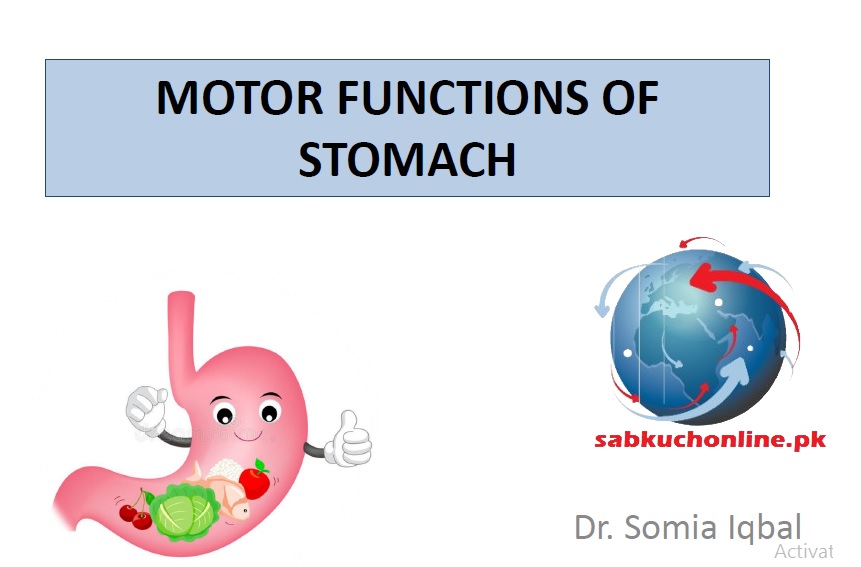Learning Objectives
By the end of lecture student should be able to
- Enumerate functions of stomach
- Explain type of movements occur in stomach
- Describe the factors that take part in regulation of stomach emptying.
Introduction

Introduction
Physiologically, it is divided into:
- the “orad”portion, comprising about the first two thirds of the body,
the “caudad” portion, comprising the remainder of the body plus the antrum.


Storage of large quantities of food



3. Slow emptying of the chyme from the stomach into the small intestine
Strong peristaltic ring like contractions from body of stomach to antral region
(6 times more powerful than mixing time peristaltic contraction)
Create 50-70cm of H2O pressure
Force chyme emptying into the duodenum (pumping
action of peristaltic waves-pyloric pump
Regulation of stomach emptying

Hunger contractions
- when the stomach has been empty for several hours ,strong rhythmical peristaltic contractions occur in the body of the stomach.
- When the successive contractions become extremely strong, they often fuse to cause a continuing tetanic contraction that sometimes lasts for 2 to 3 minutes.
• Hunger contractions more frequently occur in young, healthy people (have high degrees of gastrointestinal tone) and in person’s with lower than normal levels of blood sugar.
- When hunger contractions occur in the stomach, the person sometimes experiences mild pain in the pit of the stomach, called hunger pangs.
- Hunger pangs usually do not begin until 12 to 24 hours after the last ingestion of food; in starvation, they reach their greatest intensity in 3 to 4 days and gradually weaken in succeeding days.
Click here for Download Slideshow
Click given Below Link for download other Physiology Lectures & Slideshow
Physiology PowerPoint Slides Archives – sabkuchonline.pk
